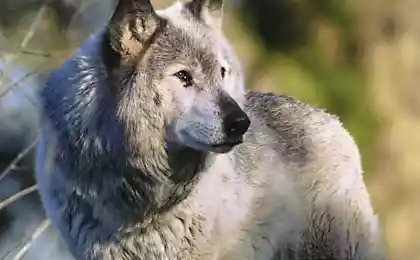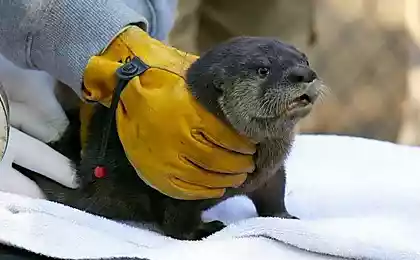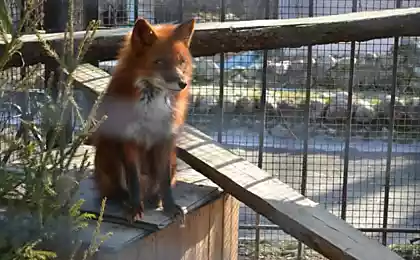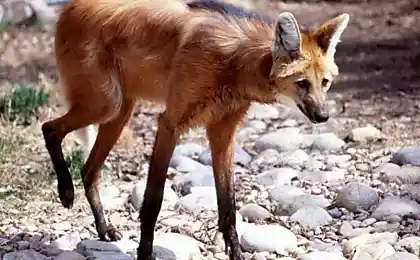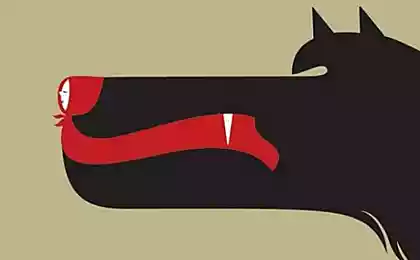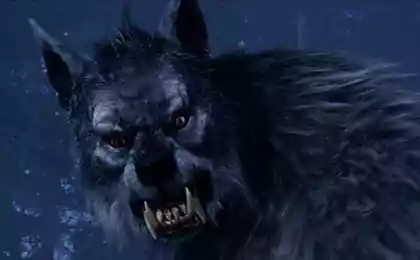201
Birdsley Zoo unveils red wolf cubs
The Beardsley Zoo in Connecticut is pleased to announce the birth of four cubs of a rare red wolf. Today, this predator belongs to an endangered species. In the wild (eastern North Carolina) there are only about 100 individuals left and almost 200 animals are kept in various zoos and centers of the United States.
Photo: Beardsley Zoo
Therefore, the birth of these four cubs (two males and two females) is an incredible success not only for Beardsley Park, but for all establishments engaged in increasing the number of red wolf.
“We are very happy to have four red wolf cubs born at the zoo,” said Beardsley Zoo director Gregg Dancho. All cubs are perfectly healthy and well developed, which gives hope for a bright future for the entire population of this endangered species.
The parents were a female named Salty and a male Mus. The four cubs are the couple’s first offspring, but despite this fact, Selty and Moose take great care of their babies. Naturally, most of the time with the cubs spends their mother, but the father is always there and ready at any time to come to the aid of his girlfriend.
It should be noted that on May 9, six cubs were born, but two of them did not survive. “It is a pity that two cubs (a male and a female) did not survive,” the director said. - They died right after birth. Thankfully, all is well with these four children. However, so that nothing happens to these cubs, they and their mother are constantly watched by our best specialists.
Six-year-old she-wolf Selty arrived at the Connecticut Zoo from Lowry Park Zoo in Tampa, Florida in the fall of 2013, while three-year-old male Mus was brought to Beardsley Zoo in January 2014 from the Wolf Conservation Center in South Salem, New York.
The breeding season in red wolves lasts from February to March. Pregnancy lasts about 60-62 days, after which 3 to 6 cubs (less often - 10) are born, which become independent by 6 months. Both parents have offspring. Life expectancy in the wild is 4 years, in captivity wolves can live up to 14 years.
The four cubs, born at the Connecticut Zoo, will stay with their parents until the fall of 2014, before being transferred to other zoos in the country.
Source: zoopicture.ru
Photo: Beardsley Zoo
Therefore, the birth of these four cubs (two males and two females) is an incredible success not only for Beardsley Park, but for all establishments engaged in increasing the number of red wolf.
“We are very happy to have four red wolf cubs born at the zoo,” said Beardsley Zoo director Gregg Dancho. All cubs are perfectly healthy and well developed, which gives hope for a bright future for the entire population of this endangered species.
The parents were a female named Salty and a male Mus. The four cubs are the couple’s first offspring, but despite this fact, Selty and Moose take great care of their babies. Naturally, most of the time with the cubs spends their mother, but the father is always there and ready at any time to come to the aid of his girlfriend.
It should be noted that on May 9, six cubs were born, but two of them did not survive. “It is a pity that two cubs (a male and a female) did not survive,” the director said. - They died right after birth. Thankfully, all is well with these four children. However, so that nothing happens to these cubs, they and their mother are constantly watched by our best specialists.
Six-year-old she-wolf Selty arrived at the Connecticut Zoo from Lowry Park Zoo in Tampa, Florida in the fall of 2013, while three-year-old male Mus was brought to Beardsley Zoo in January 2014 from the Wolf Conservation Center in South Salem, New York.
The breeding season in red wolves lasts from February to March. Pregnancy lasts about 60-62 days, after which 3 to 6 cubs (less often - 10) are born, which become independent by 6 months. Both parents have offspring. Life expectancy in the wild is 4 years, in captivity wolves can live up to 14 years.
The four cubs, born at the Connecticut Zoo, will stay with their parents until the fall of 2014, before being transferred to other zoos in the country.
Source: zoopicture.ru


